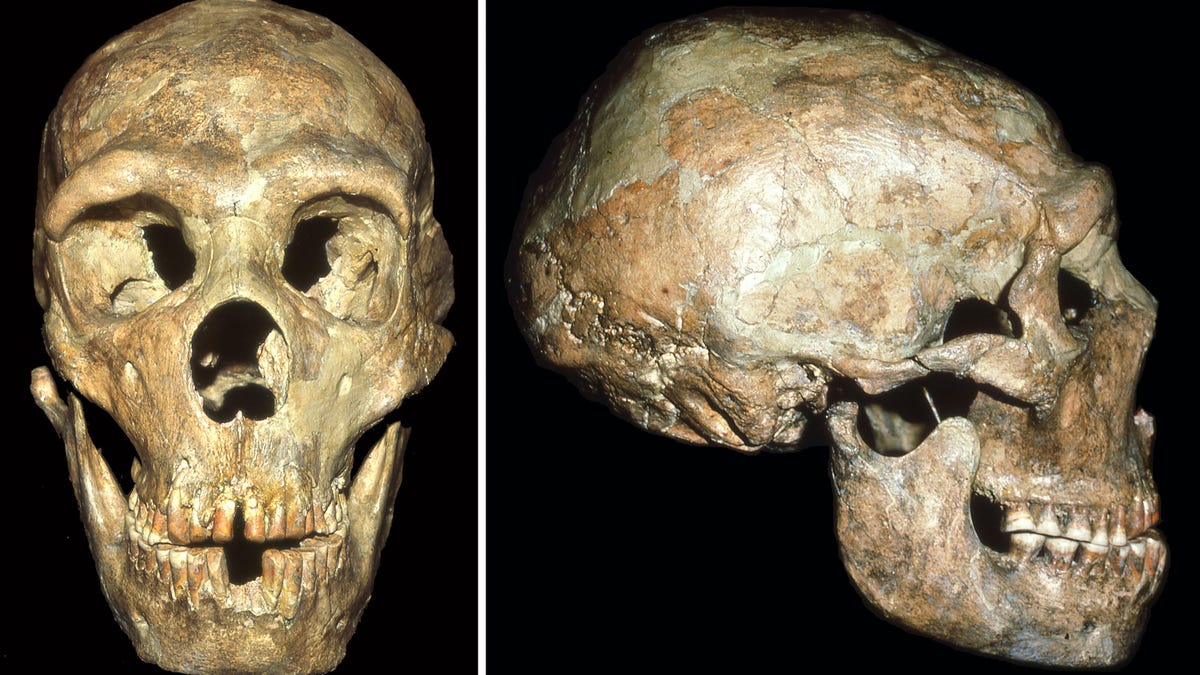Neanderthals took care of deaf buddy, bucking bad reputation
A Neanderthal man with significant injuries and hearing loss lived to an old age thanks to help from his community.
Neanderthals generally get a bad rap. Many people don't think of these extinct human relatives as much more than primitive cavemen. But scientists are learning more about their ways, and they reveal a complex story.
The latest chapter involves a Neanderthal man who lived into his forties despite having a limp, missing an arm and being deaf. He most likely got there through the care of his fellow Neanderthals.
Anthropologist Erik Trinkaus from Washington University in St. Louis co-authored a new study that examines the remains of Shanidar 1, a Neanderthal who lived around 50,000 years ago. Archaeologists unearthed Shanidar 1 in 1957 in a cave in Iraq. The bones tell a fascinating story.
Shanidar 1 had his right arm amputated at the elbow, suffered injuries to his right leg and received a blow to the skull when young. The new look at the remains reveals bony growths in the Neanderthal's ear canals that would have caused deafness. Trinkaus says these disabilities would have left the Neanderthal dependent on others in his group for survival.
This look at Shanidar 1's ear canal shows the deformities that led to deafness.
According to a 2010 study by Trinkaus on mortality patterns among Neanderthals and early modern humans, those who lived past forty were into their old age. They had to survive in a challenging environment with what Trinkaus describes as "ubiquitous carnivores" seeking them out for prey.
"The debilities of Shanidar 1, and especially his hearing loss, thereby reinforce the basic humanity of these much maligned archaic humans, the Neandertals," Trinkaus says.
(You will notice many scientists spell it "Neandertal" as opposed to the more popular "Neanderthal." Paleoanthropolgist John Hawks discusses in a blog post how this difference came about. In short, it has to do with changes to spelling in the German language well after Neanderthals were first discovered in the 1800s.)
The Shanidar 1 work adds another stereotype-busting dimension to what we know about Neanderthals. A study released in 2015 found Neanderthals likely took hot baths, though a 2016 study sketched out a less pleasant portrait of Neanderthals as cannibals.
The researchers published the latest study on Oct. 20 in the journal PLOS One under the title "External auditory exostoses and hearing loss in the Shanidar 1 Neandertal."
Rebooting the Reef: CNET dives deep into how tech can help save Australia's Great Barrier Reef.
The Smartest Stuff: Innovators are thinking up new ways to make you, and the things around you, smarter.


